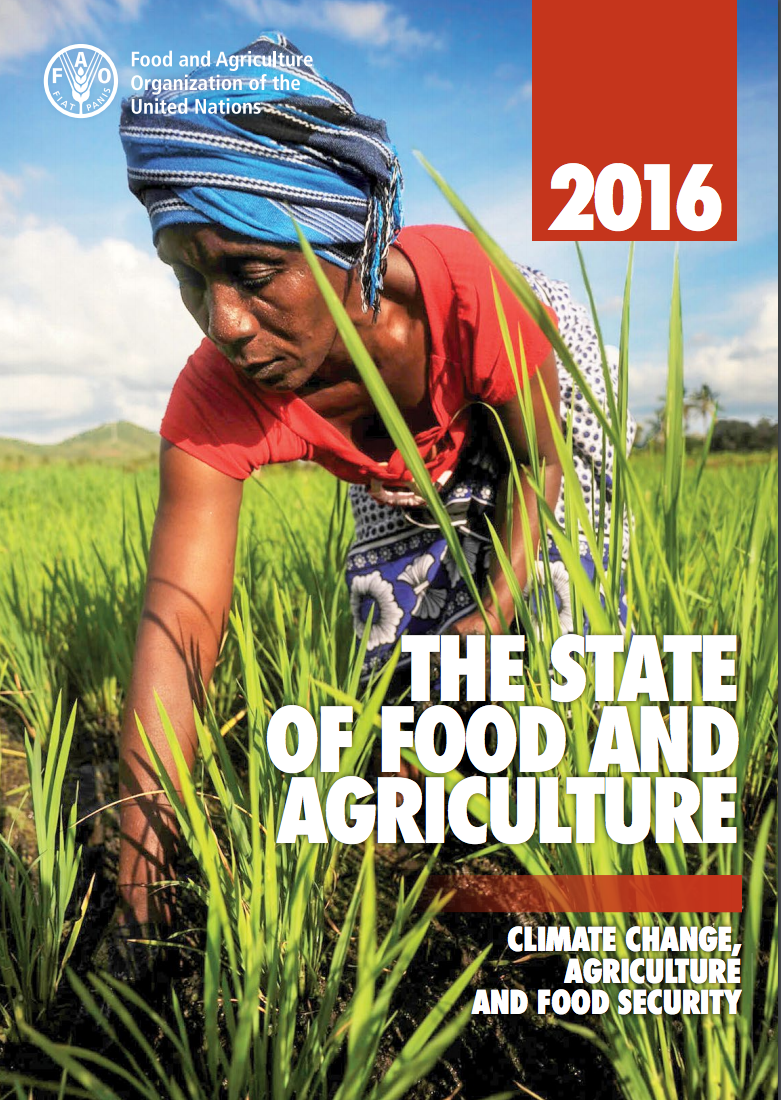A major new report from the United Nation’s Food and Agriculture Organization (FAO) today outlines the importance of improved crops and biotechnology in reducing poverty and addressing the climate change challenge faced by the world’s 750 million smallholder farmers.
The FAO’s annual State of Food and Agriculture 2016 report addresses a plethora of different approaches to tackling climate change in smallholder farming, including increased crop diversity, off-farm income sources, access to markets and credit sources, a renewed focus on gender, and agro-ecological farming practices that conserve soil organic matter and water resources.
The report also renews the FAO’s focus on climate-smart agriculture, which combines both adaptation and mitigation in improved farming systems. One of its three key principles is “sustainably increasing agricultural productivity to support equitable increases in incomes, food security, and development.” Examples suggested by the FAO include the adoption of heat- and drought-resistant varieties of important crops, as well as expanding irrigation and the adoption of conservation agriculture.
While statements by FAO officials have often been equivocal about biotechnology over the years, the 2016 report does contain a strong paragraph of endorsement:
“Biotechnologies, both low- and high-tech, can help small-scale producers in particular to be more resilient and to adapt better to climate change. While the subsections that follow focus mainly on innovation through management practices, some practices may depend on the outcomes of biotechnology, such as improved seed.”
The FAO’s statement is welcome in that it represents a clearer acknowledgement that biotechnology and improved crop varieties – while not a silver bullet by themselves – do play a vital role in wider strategies for assisting smallholder farmers to address climate change. This is in contrast to many NGOs, which assert that genetically engineered crops in particular should be prohibited in Africa despite their likely benefits.
An example of climate-smart crops is the new drought-tolerant maize varieties currently being developed under the Water Efficient Maize for Africa (WEMA) project. As the Alliance for Science recently reported, the first field trial in Tanzania has now been planted. It marks the first stage in a process that eventually may allow Tanzanian farmers access to seeds that will help them become more climate-resilient in their staple food production. Drought-tolerant WEMA varieties are already reaching farmers in Kenya and South Africa.
The importance of WEMA and the immediacy of climate change threats have become very clear in south and east Africa, where food insecurity is currently rising as many countries experience severe drought conditions. However, political factors in some of the affected countries, such as Malawi, Zambia, and Zimbabwe, have so far meant that smallholder farmers cannot adopt drought-tolerant maize because some varieties will carry the popular stigma of being GMO. In Uganda, European-funded NGOs have long campaigned against proposed biosafety laws that would allow disease-resistant staple crops such as cassava and banana to be adopted by smallholder farmers.
Although it does not address the ongoing political barriers to adoption of some improved crops, the FAO does make clear in the report that there need be no either-or approach to different climate-smart agriculture approaches. It outlines, for example, agro-ecological projects that protect water and reduce fertilizer needs with leguminous nitrogen-fixing trees, and the benefits of more diverse polyculture, rather than genetically-uniform monoculture. There is no reason why these more diverse systems should exclude crops carrying traits such as drought tolerance and disease resistance just because they have been developed using molecular genetic techniques.
The FAO report also points out that – despite the oft-heard criticisms of industrial agriculture – yield improvements in modern farming have historically been an important contributor to reducing agricultural emissions. It reports that agricultural intensification between 1961 and 2005 avoided greenhouse gas emissions of 161 billion tons of carbon, and that increased agricultural productivity – often termed sustainable intensification – compares “favorably” with other mitigation strategies because it prevents the loss of forests that would otherwise happen due to farmland expansion to feed an increasing population.
However, the FAO also makes abundantly clear that even with increased production efficiencies the rising consumption of animal products will continue to put increasing strain on the food system. Higher consumption of vegetables and pulses, combined with eating less beef and pork, has both environmental and human health benefits, the report emphasises. Both consumption and production efficiencies have a part to play. In other words – as always, there is no either-or.
Read the full report here.

